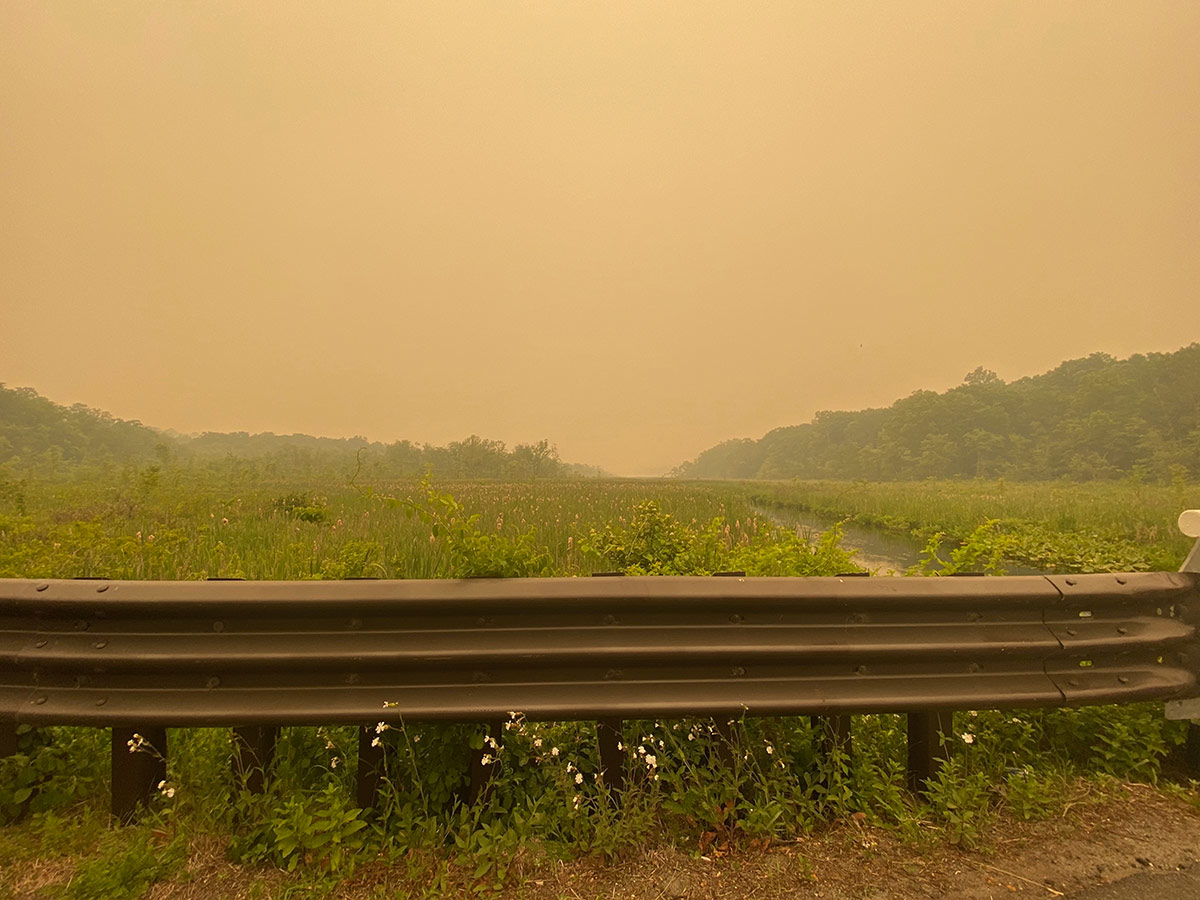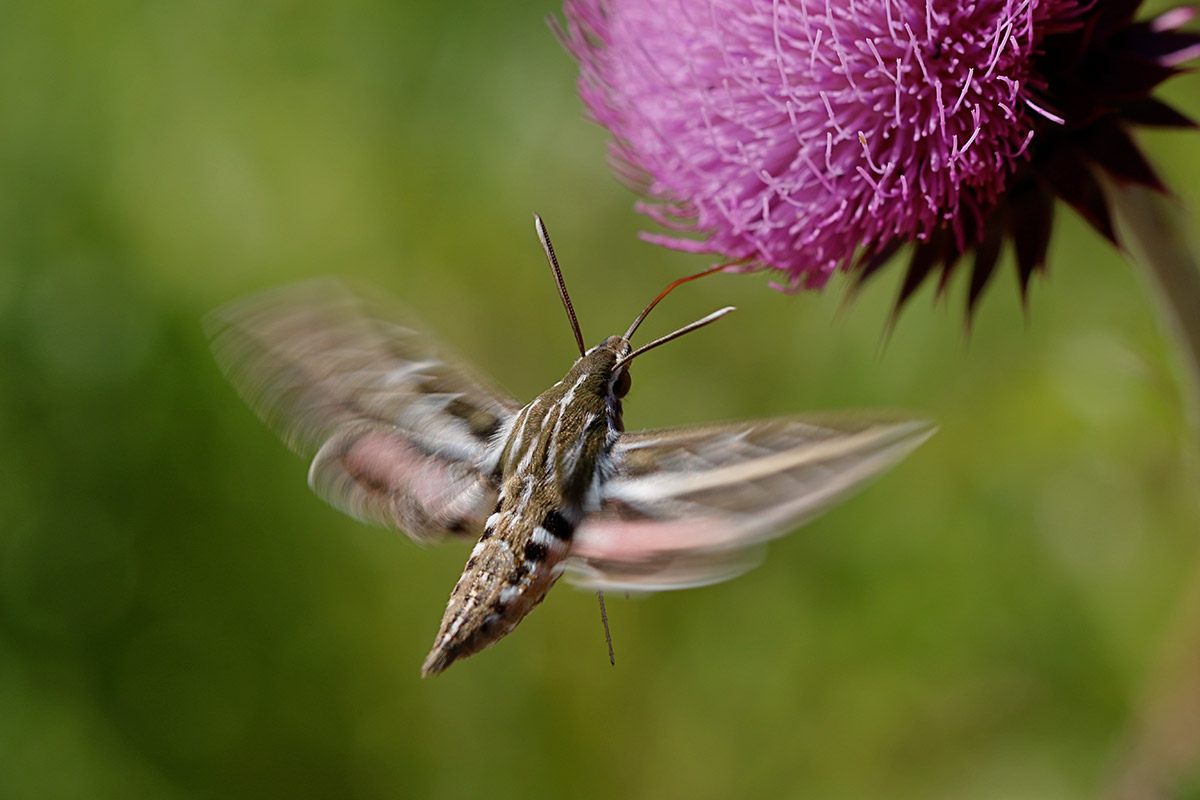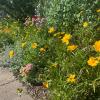It’s mid-June of 2023. As I stood watering my tomato plants in my backyard in St. Paul, Minnesota, I should be seeing clear blue skies. Instead, I was wearing an N95 respirator because the sky was choked with a dusty haze. Smoke from unprecedented wildfires in Canada, induced and made worse by the climate crisis, had blanketed the Midwest yet again.
In recent years, many of us have experienced painfully strong reminders of the consequences of air pollution, and their effects on our health. But of course, other animals have to deal with air pollution too. On that smoky day, I saw a single bumble bee buzz by, and felt anxious about the risks to the wildlife we are working so hard to conserve.

Air pollution comes in several forms
When we talk about air pollution, there are two types of substances to keep in mind. One common group of pollutants are toxic gasses that can be harmful to breathe. Second, dust and other tiny particles, when small enough, are also a type of air pollution (called “particulate matter”). Both of these types of air pollutants are created by many sources, such as transportation emissions, factories, extractive industries, construction, and increasingly frequent wildfires.
Air pollution is a serious threat to pollinators
Pollinators are exposed to pollution in many ways, all of which are hard or impossible for them to avoid. As pollinators fly through the air, particulate matter can stick to their wings and bodies, and build up over time. Particulate matter can also settle onto the surfaces of plants, flowers, and soil, and transfer to the animal as they visit flowers or nest in the ground. And like us, pollinators and other bugs also breathe in toxic gasses in polluted air.
While we still need to learn more about the impacts to the many different species of pollinators we are trying to protect, the overall message of the research is clear. Air pollution, even at low levels or limited exposure, can make it more difficult for pollinators to find flowers and successfully pollinate them, and in the worst cases, can kill them outright.
Air pollution messes with pollinators’ senses
By disrupting bugs’ ability to smell, air pollution affects many parts of their lives. Smell is a very important sense for all bugs, and especially pollinators. Many insects use smelly pheromones to find mates or to alert each other to threats. Air pollution not only covers up those smells, but can also break down the pheromone molecules themselves, making this form of communication much harder. The same goes for scents, such as those from flowers, that pollinators use to find places to live or eat. In one study, when hawkmoths were exposed to a polluting gas (nitrogen oxide), they decreased their visits to flowers by as much as 50-70%. All of these problems result in pollinators having to forage longer and farther distances to find flowers, and the plants themselves getting fewer visits from pollinators.

Air pollution harms the plants pollinators rely on
Plants are both habitat and food source for pollinators, but plants growing in polluted air don’t grow as large. This can even alter the pollen the plants produce, making fewer, smaller pollen grains. Ultimately, these effects can cause some plant species to die out in an area, making the community less diverse, and worse at supporting different species of pollinators.
Air pollution damages pollinators’ bodies, sometimes killing them
Exposure to pollution causes lasting harm to pollinators’ bodies, just like ours, making it difficult for them to survive other threats. Researchers have found that air pollution can weaken bees’ immune systems, making it harder for them to avoid and recover from infections. Likewise, pollution makes breathing more difficult by damaging their circulatory system. Pollinators’ brain function is also at risk. Polluted air can cause pollinators to become disoriented, and even cause memory issues, making them take longer to learn and remember plant smells.
We can support pollinators by organizing for cleaner air
While we can wear respirators and turn on air filters to mitigate the impacts of air pollution, pollinators have to rely on us to protect them. The most powerful tool we have for cleaning up air pollution is working together to demand change. Because many industrial facilities were and continue to be deliberately built in systematically disinvested communities, there is a long history of environmental justice movements addressing and fighting for clean air.
Here are some actions you can take to improve air quality for pollinators (and our communities):
- Join a local air quality or environmental advocacy group
- Support or start community air monitoring projects
- Consider testing soil and air for pollutants if you are installing pollinator habitat near industry or other areas with a history of pollution
- Use the Environmental Protection Agency’s database to look up if a local facility is violating Clean Air Act regulations
- Contact your legislators and/or regulatory agencies to demand more oversight and regulation over pollution sources
The most important thing to remember is that the struggle for clean and safe air for humans is inextricably tied to the wellbeing of the pollinators who support the ecosystems we depend on together.




